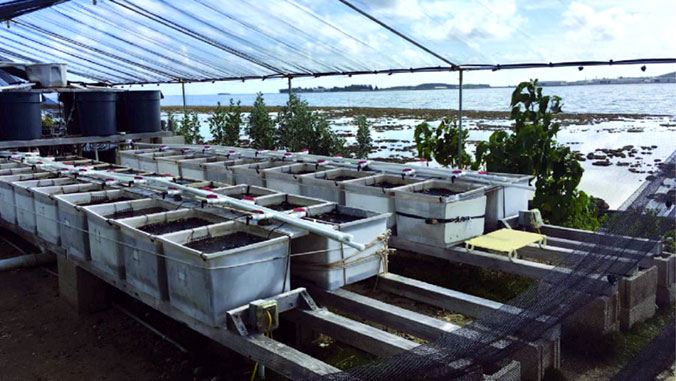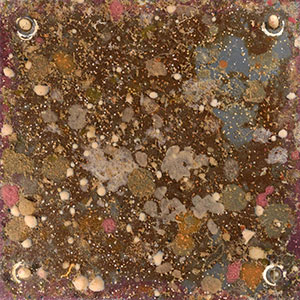Coral Reef Biodiversity Predicted To Shift As Climate Changes
Coral reefs are among the most biologically diverse, complex and productive ecosystems on the planet. Most of coral reef biodiversity consists of tiny organisms living deep within the three-dimensional reef matrix
 Experimental set up at HIMB with mesocosms. (Photo credit: Chris Jury) Although largely unseen, this diversity is essential to the survival and function of coral reef ecosystems, and many have worried that climate change will lead to dramatic loss of this diversity.
Experimental set up at HIMB with mesocosms. (Photo credit: Chris Jury) Although largely unseen, this diversity is essential to the survival and function of coral reef ecosystems, and many have worried that climate change will lead to dramatic loss of this diversity.
New research led by scientists at the University of Hawaiʻi at Mānoa reveals that the species which dominate experimental coral reef communities shift due to climate change, but the total biodiversity does not decline under future ocean conditions of warming and acidification predicted by the end of the century.
 Plate from experiment showing variety of organisms. (Photo credit: Jan Vicente)
Plate from experiment showing variety of organisms. (Photo credit: Jan Vicente)
The study was published in the Proceedings of the National Academy of Science.
“Rather than the predicted collapse of biodiversity under ocean warming and acidification, we found significant changes in the relative abundance, but not the occurrence of species, resulting in a shuffling of coral reef community structure,” said Molly Timmers, lead author who conducted this study during her doctoral research at the Hawaiʻi Institute of Marine Biology (HIMB) at UH Mānoa’s School of Ocean and Earth Science and Technology (SOEST).
Important but overlooked organisms
“The tiny organisms living in the reef structure are known as the cryptobiota, which are analogous to the insects in a rainforest,” said Timmers. “They play essential roles in reef processes such as nutrient cycling, cementation and food web dynamics—they are an important diet of many of the fishes and invertebrates that make coral reef ecosystems so dynamic.”
Despite their critical importance to coral reef ecosystems, these cryptobiota are often overlooked in climate change research due to the challenges associated with surveying them using visual census and in identifying this highly diverse and understudied community.
“As a result, our perceptions of coral reef biodiversity across marine gradients and how biodiversity will respond to climatic change has been primarily based on a handful of observable surface-dwelling taxa, such as corals and fish,” said Timmers.
Experimental designs
To assess the responses of the understudied cryptobiota to future ocean conditions, Timmers and colleagues at HIMB devised an experiment wherein tiered settlement plates were placed in experimental flow-through tanks. These mesocosms received unfiltered seawater from a nearby reef slope off the shore of HIMB and were treated with end-of-the-century predicted ocean warming and/or ocean acidification conditions. After two years of exposure, the team examined the organismal groups that had developed on the settlement plates using DNA metabarcoding techniques.
“This two-year experimental mesocosm study is unprecedented for climate change research and is the first one to examine the diversity of the entire coral reef community from microbes and algae to the corals and fishes,” said Chris Jury, the author who developed and maintained the mesocosm system.
This work is an example of UH Mānoa’s goal of Excellence in Research: Advancing the Research and Creative Work Enterprise (PDF) and Building a Sustainable and Resilient Campus Environment: Within the Global Sustainability and Climate Resilience Movement (PDF), two of four goals identified in the 2015–25 Strategic Plan (PDF), updated in December 2020.
For more information, see SOEST’s website.
Publication: Molly A. Timmers, et al. Biodiversity of coral reef cryptobiota shuffles but does not decline under the combined stressors of ocean warming and acidification. Proceedings of the National Academy of Science, (2023). DOI: 10.1073/pnas.210327511
Original Story Source: University of Hawaii at Manoa

 Alerts Sign-up
Alerts Sign-up